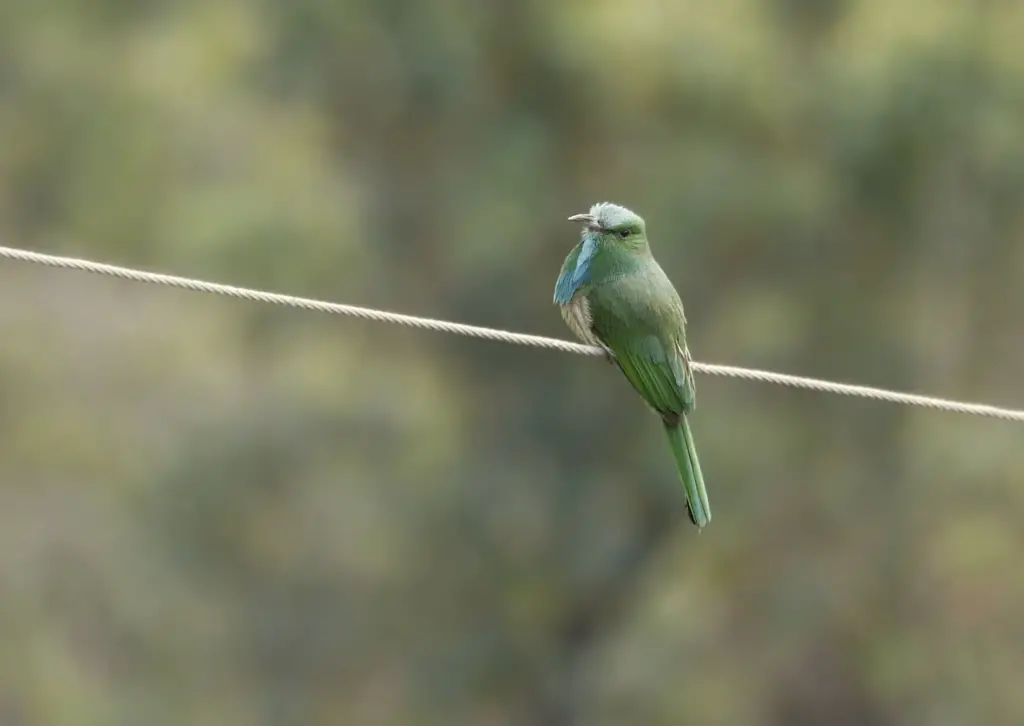Blue-bearded Bee-eaters
Blue-bearded Bee-eaters
The Blue-bearded Bee-eaters (Nyctyornis athertoni) are large bee-eaters found in South Asia, where they are generally found in openings in patches of dense forest.
They occur in the Malayan region, extending into the Western Ghats in southwestern India.

Subspecies Ranges and ID
Nyctyornis athertoni athertoni – Nominate Race
- Range: India and parts of mainland Southeast Asia
Nyctyornis athertoni bartletti (described W. N. Koelz)
- Range: Hainan Island located in the South China Sea
Description
Blue-bearded Bee-eater has a large sickle-shaped bill.
The plumage is grass green with a turquoise forehead, face and chin. It was named for the elongated feathers of the throat that give it a bearded appearance when they are fluffed out.
The abdomen is yellowish to olive with streaks of green or blue; although the plumage of the peninsular Indian populations is said to be paler green than that of the the northeast Indian populations.
Males and females are mostly alike; except the male’s blue throat feathers show higher ultraviolet reflectivity than those of the female.

Distribution and habitat
Blue-bearded Beaters mostly occur at medium-level altitudes but below 2000m. They have been reported from the hill regions of the Satpuras, Western Ghats, Eastern Ghats, Nilgiris, Chota Nagpur, and from the Sub-Himalayan forests.
They favor thin to fairly thick forests with clearings. They are usually seen alone or in small groups of up to three birds.
Calls / Vocalizations
Their loud calls are described as cackling hornbill-like sounds, a dry “Kit-tik… Kit-tik” in a series or hollow nasal “kyao” calls.
Pairs engage in duets of cackling and rattling which ends in short purring notes.
Breeding / Nesting
In India, most breeding activities are observed between February to August.
The courtship ritual involves mutual feeding, bowing, and tail fanning.
The nest is a deep tunnel in a mud bank.
The average clutch consists of 4 very spherical, white eggs.
Diet / Feeding
As is suggested by their names, they mostly feed on bees


